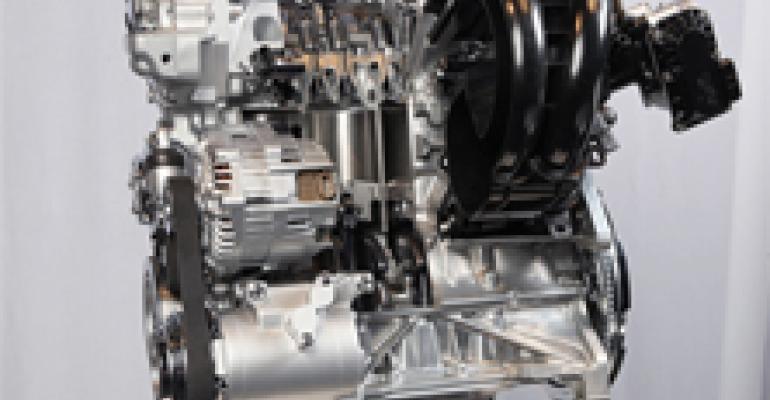
VANCOUVER, BC, Canada – Mazda says it rethought common thermodynamic principles in the development of its new Skyactiv-G 2.0L 4-cyl. gas engine.
The engine has an “extraordinarily high” 13:1 compression ratio only seen thus far “on high-performance race-car engines,” the auto maker says.

Ritaro Isobe, group manager of Skyactiv-G development, says the compression ratios for most engines, including downsized turbo mills, range from 9:1 to 11:1. Even the Ferrari 458 supercar only has a 12:5 ratio.
The direct-injection Sky-G’s ratio is groundbreaking, he tells Ward’s during a recent media event here.
Isobe says his team was tasked with developing a gas engine with ideal combustion, which he describes as a unit that has less exhaust, cooling, pumping and mechanical-friction losses.
While a high compression ratio accomplishes many of those goals, it comes with challenges, which is why most auto makers don’t push the boundary like Mazda has, Isobe says.
The primary issue associated with high-compression gasoline engines is unwanted abnormal combustion, or knocking, and a reduction in torque.
Engineers considered using a richer gas/air mixture and delayed ignition timing to avoid knocking, but the resulting loss of fuel economy and torque was unsatisfactory. Instead, unique solutions were needed, Isobe says.
To circumvent knocking, Mazda has developed a 4-2-1 exhaust manifold that helps capture hot residual gases, which lowers the compression temperature by keeping the gases from being forced back into the combustion chamber.
Isobe and his team also reduced combustion duration, which shortens the time the unburned air-fuel mixture is exposed to high temperatures, enabling normal combustion to end before knocking occurs.
Special piston cavities are designed to allow smooth initial combustion-flame growth to spread without interference, while new multi-hole injectors enhance fuel-spray characteristics, Isobe says.
The innovations result in 148 lb.-ft. (201 Nm) of torque, a 15% increase over Mazda’s current 2.0L MZR gas engine, while offering a 15% improvement in fuel economy. Official fuel-economy numbers have yet to be released, but the new engine is expected to achieve 30-40 mpg (7.8-5.8 L/100 km) in city/highway driving.
Engine efficiency is further improved by minimizing the pumping loss that occurs at lower engine loads with continuously variable sequential valve timing on the intake and exhaust valves. The setup changes the opening and closing timing of the valves, enabling the air-intake quantity to be controlled by the valves, not the throttle.
Weight was cut using 20% lighter pistons and 15% lighter connecting rods.
The 2.0 Skyactiv-G, set to debut in the ’12 Mazda3, is expected to generate 155 hp. But versions with other displacements are in the works, including a new 1.3L or 1.5L version that reportedly will power the next-generation MX-5 Miata.
While other auto makers have achieved similar improvements in their engines by downsizing and turbocharging, Robert Davis, senior vice president-U.S. operations, says the conventional approach didn’t make sense for Mazda.
Turbocharging and downsizing are “certainly right for certain applications, but not for all applications,” he tells Ward’s.




